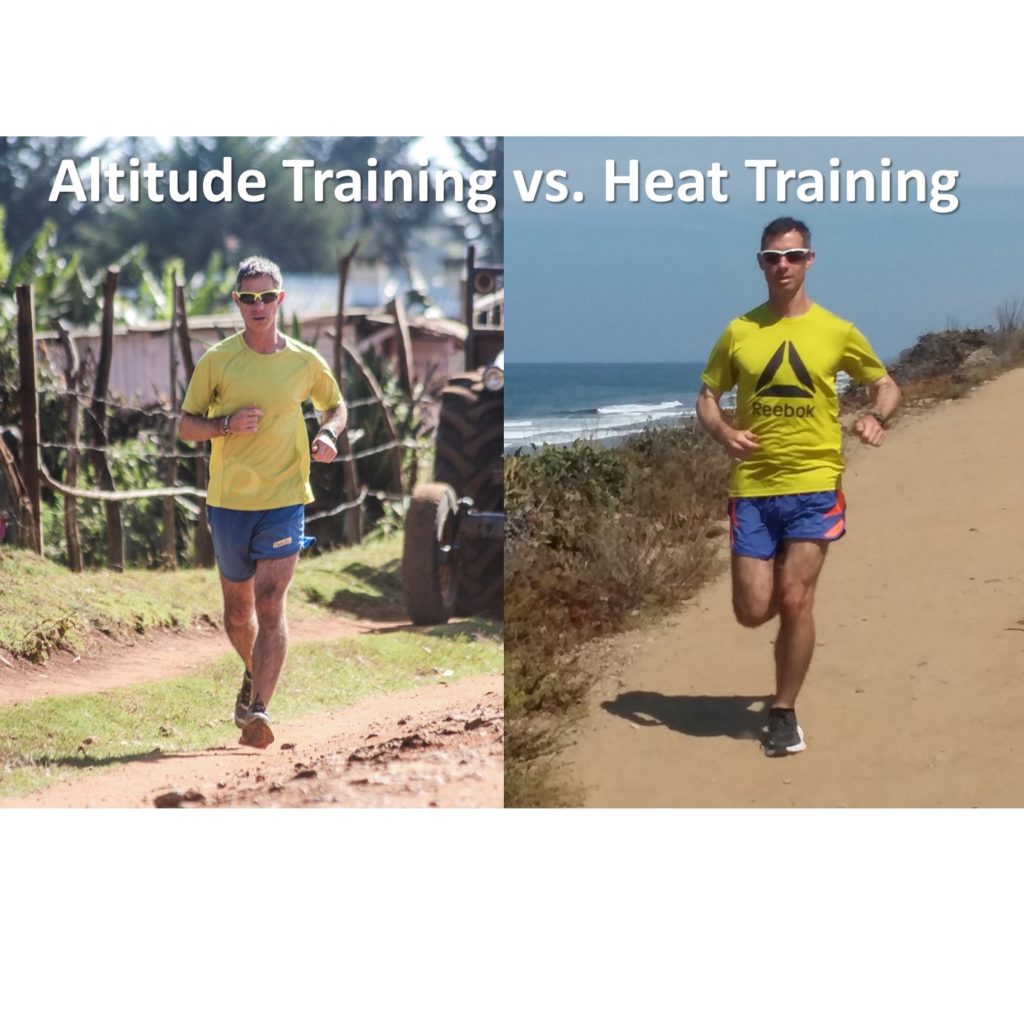Ever been told that running in the heat is like running at altitude? Haha. It’s not.
The reason why you run slower at altitude is because of less oxygen delivery to skeletal muscles because of the lower partial pressure of oxygen in the air.
The reason why you run slower in the heat is because of an increase in body temperature, which negatively affects the central nervous system and decreases blood pressure. You also lose a lot of water through sweating in an attempt to cool yourself and regulate body temperature, which reduces blood volume and thus stroke volume of the heart.
The physiological adaptations acquired with heat vs. altitude training are also not equivalent.
Training at altitude causes erythropoiesis, which is a fancy way of saying you make more red blood cells and hemoglobin to compensate for the reduction in oxygen delivery. Increased hemoglobin is the primary adaptation from altitude training.
Training in the heat causes plasma volume expansion, which is a fancy way of saying that you increase the plasma (non-red blood cell) portion of your blood. This happens because increased body temperature causes a decrease in central venous pressure and blood flow to kidneys, which stimulates the secretion of the hormone aldosterone. Increased plasma volume is the primary adaptation from heat training.
Which type of training is more effective?
Altitude training.
The physiological adaptations acquired from altitude training are superior to those gained from heat training when preparing for temperate, sea-level races.
You cannot substitute heat training for altitude training. They are not the same thing.
